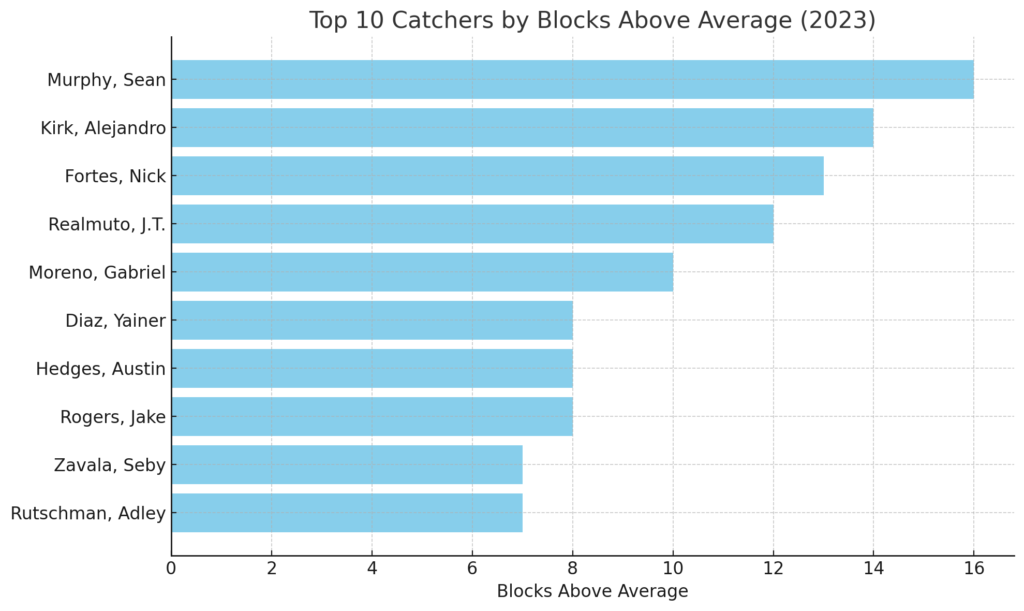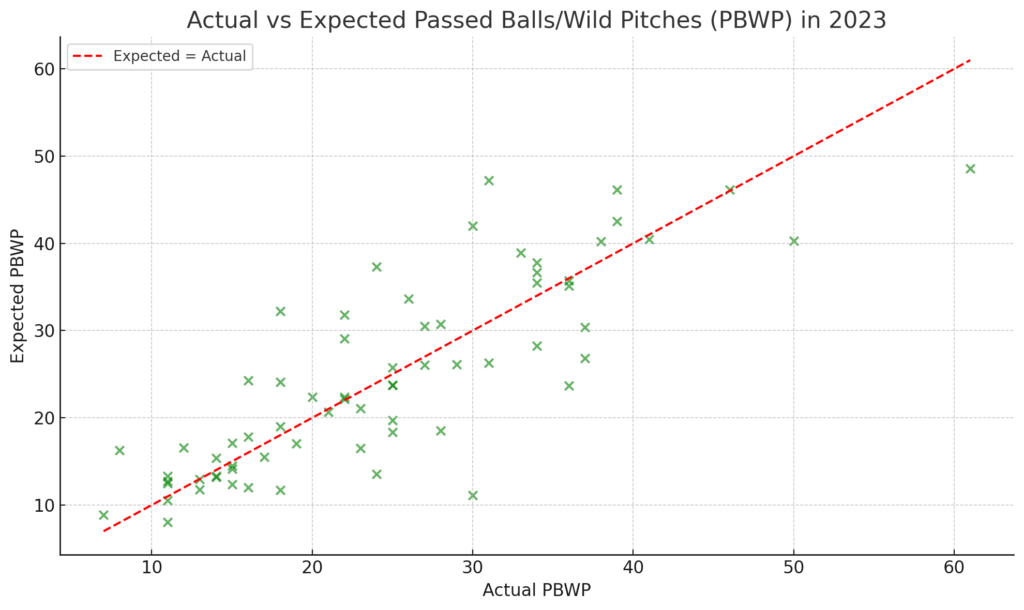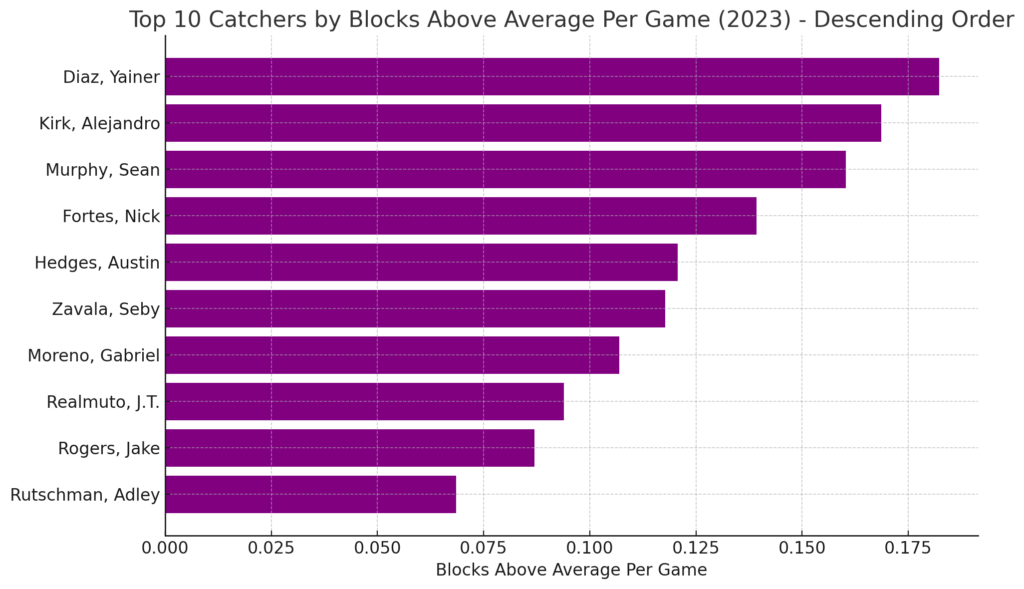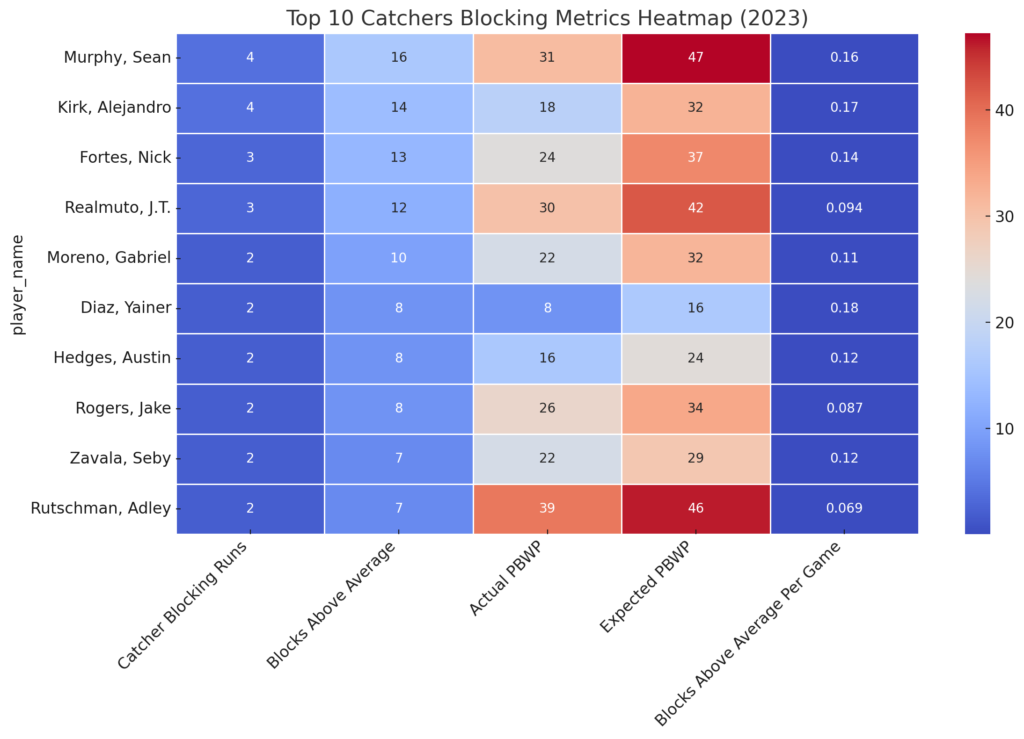Catcher defense, especially the ability to block pitches, can often go unnoticed but significantly impact the game. Preventing wild pitches and passed balls can save crucial runs and give pitchers confidence to throw in the dirt when necessary. In 2023, several catchers distinguished themselves as exceptional blockers. Let’s take a look at some of the data.
This analysis uses metrics like “blocks above average,” passed balls/wild pitches (PBWP), and more to examine the best catchers at blocking pitches during the season. Below, I break down the data to highlight the elite performers.
1. Top 10 Catchers by Blocks Above Average
“Blocks above average” is a critical statistic that tells us how much better (or worse) a catcher is compared to the league average at blocking pitches. Here’s a look at the top 10 catchers based on this metric:

As shown, Sean Murphy from the Atlanta Braves leads the way with 16 blocks above average, followed closely by Alejandro Kirk and Nick Fortes. These catchers were above average in keeping pitches in front of them, saving runs for their teams.
2. Actual vs. Expected PBWP
Next, take a look at the actual vs. expected number of passed balls and wild pitches (PBWP). The scatter plot below visualizes this comparison:

Catchers whose actual PBWP is lower than expected (below the red line) performed better than average. Catchers like Sean Murphy and J.T. Realmuto are among those outperforming expectations, while others are closer to the expected values. Note that the majority of catchers were about average.
3. Blocks Above Average Per Game
Another critical metric is the rate catchers accumulate blocks above average per game. This accounts for differences in playing time and offers a normalized view of performance. Here’s a look at the top 10 catchers:

The usual suspects are once again prominent. Notice that Yainer Diaz ranked number one in the league in this critical category.
4. Comprehensive Heatmap
To better understand each catcher’s performance, I’ve compiled several blocking metrics into a heatmap. This chart includes statistics such as catcher blocking runs, blocks above average, actual vs. expected PBWP, and blocks above average per game:

The heatmap above gives a comprehensive view of the top 10 catchers. The varying shades show how these catchers compare across multiple metrics, with Sean Murphy, Alejandro Kirk, and Nick Fortes again emerging as the top performers. This heatmap allows us to see the nuances in their blocking ability, with some excelling at reducing passed balls. In contrast, others are better at blocking above average on a per-game basis.
Conclusion
Nuance and subtlety are the operative words here. Asking who was the best defensive catcher in 2023 has as complex and interesting answer. What should we value in a catcher’s defense? Which metric is more important to winning than the others? Can you settle for a below-average pop time if your catcher is brilliant at framing pitches? Lots of great questions that require thoughtful answers. Stay tuned; I will continue posting my analyses. And yes, I do intend to publish some (hopefully) thoughtful conclusions.
